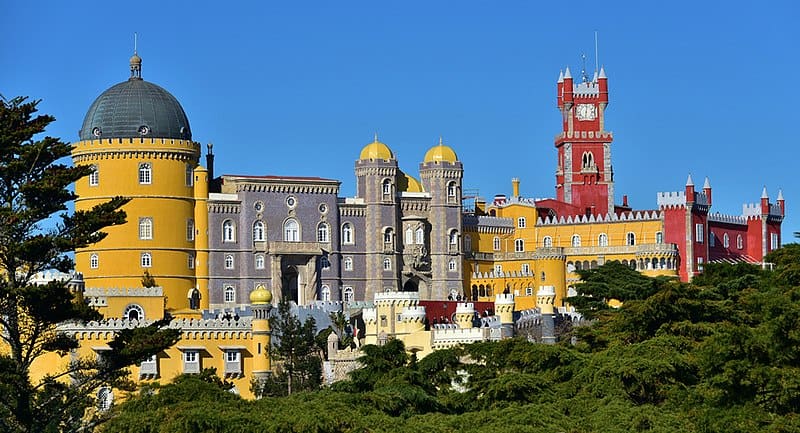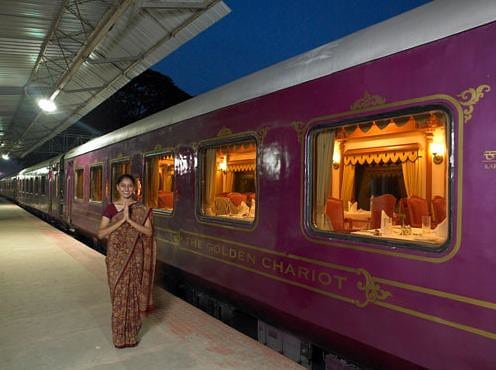Architecture is an ever-evolving art form, constantly pushing the boundaries of creativity and innovation. Around the world, there are buildings that captivate us not only with their functionality but also with their unique and peculiar designs. From whimsical houses to futuristic structures, these architectural marvels challenge conventional norms and inspire awe. This list showcases 18 of the most peculiar buildings and architectural designs that stand out for their originality and distinctive charm. Each of these structures tells a story, blending artistry with practicality in the most fascinating ways.
The Crooked House (Sopot, Poland)
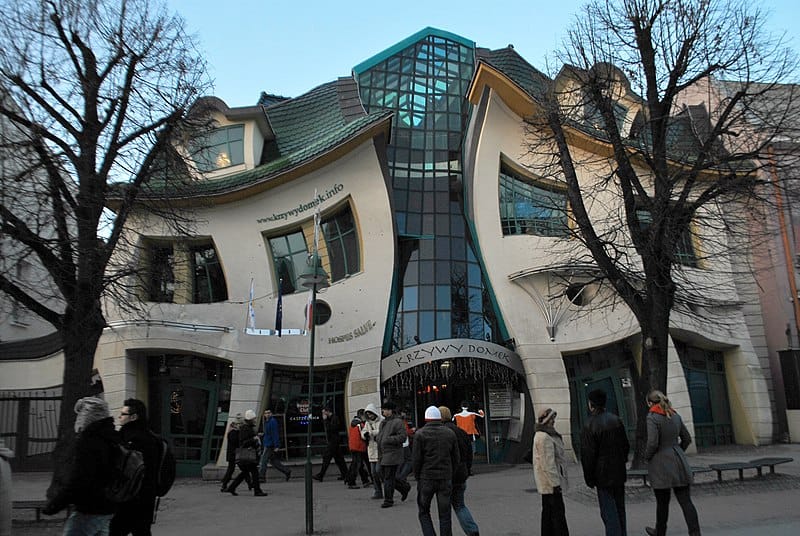
Nestled in the heart of Sopot, Poland, the Crooked House looks as if it has been plucked from a fairy tale. Designed by Szotynscy & Zaleski, this quirky building is inspired by the drawings of Jan Marcin Szancer and Per Dahlberg. Its warped walls and whimsical design create a dreamlike atmosphere. Despite its playful appearance, it houses a range of shops and restaurants, blending fantasy with functionality. The building’s undulating lines and colorful facade make it a standout landmark.
The Basket Building (Newark, Ohio, USA)
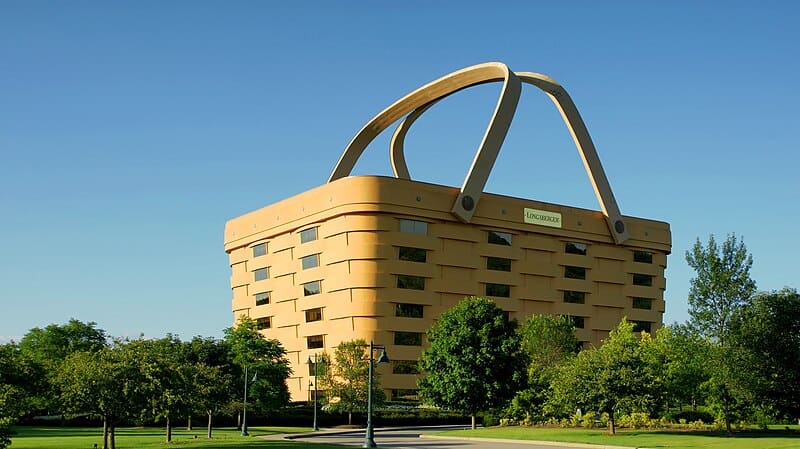
The Basket Building in Newark, Ohio, is an exact replica of a traditional picnic basket, but on a colossal scale. This seven-story structure was the former headquarters of the Longaberger Basket Company. With its handle weighing almost 150 tons, the building is a marvel of engineering. Inside, it features a grand atrium and skylight, bringing natural light into the workspaces. The Basket Building remains an iconic symbol of creative corporate architecture.
Hundertwasserhaus (Vienna, Austria)
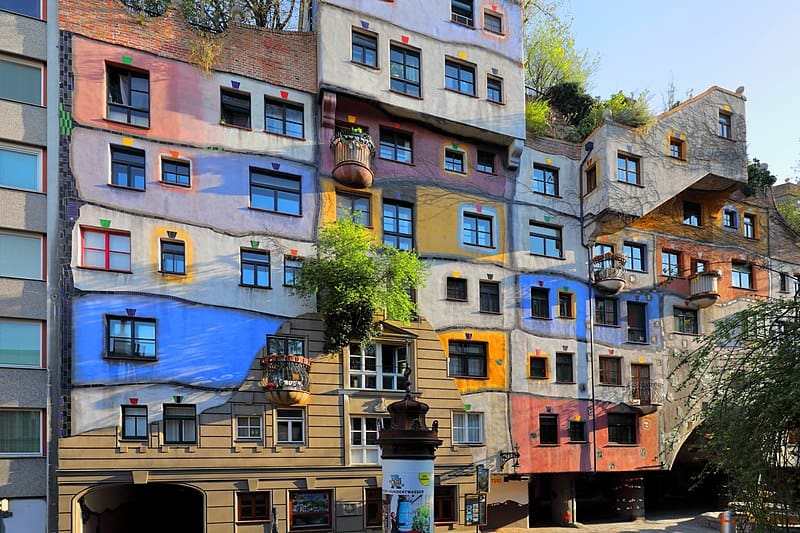
Vienna’s Hundertwasserhaus is a colorful residential building designed by Friedensreich Hundertwasser. Known for his disdain for straight lines, Hundertwasser incorporated uneven floors, whimsical shapes, and vibrant colors. The building is covered in trees and shrubs, blending nature with architecture. Each apartment is unique, reflecting Hundertwasser’s belief in individualism and creativity. This eccentric structure has become one of Vienna’s most visited attractions.
The Dancing House (Prague, Czech Republic)
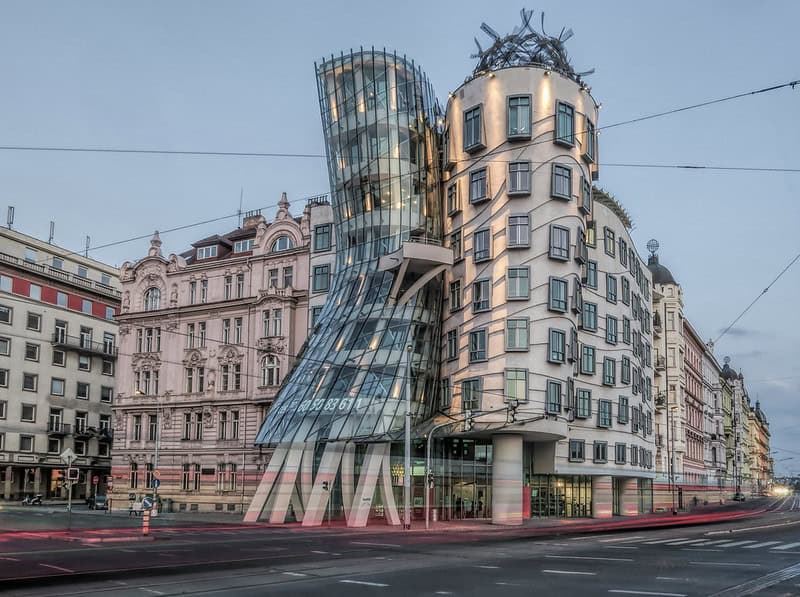
The Dancing House in Prague, designed by Frank Gehry and Vlado Milunić, resembles a pair of dancers swaying together. Its unconventional curves and glass facade contrast sharply with the surrounding Baroque and Gothic buildings. Nicknamed “Fred and Ginger” after the famous dance duo, the building symbolizes modernity and movement. Inside, it hosts offices, a gallery, and a restaurant with panoramic views of the city. The Dancing House exemplifies Gehry’s signature style of deconstructivism.
Habitat 67 (Montreal, Canada)
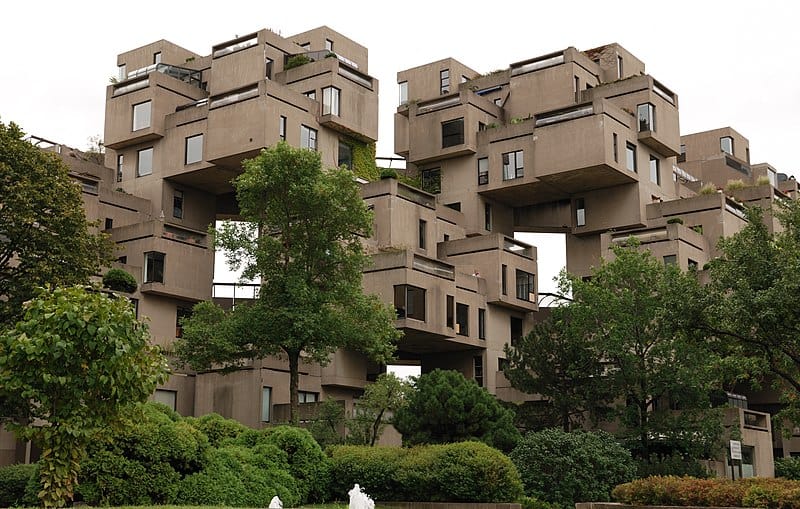
Habitat 67 is a unique housing complex in Montreal, designed by Moshe Safdie for Expo 67. Comprising 354 identical prefabricated concrete units, the structure resembles a cascading stack of Lego blocks. Each unit has its own terrace, providing private outdoor space in an urban setting. The design aimed to combine the benefits of suburban homes with the density of urban apartments. Habitat 67 remains an influential example of modular architecture.
The Lotus Temple (Delhi, India)
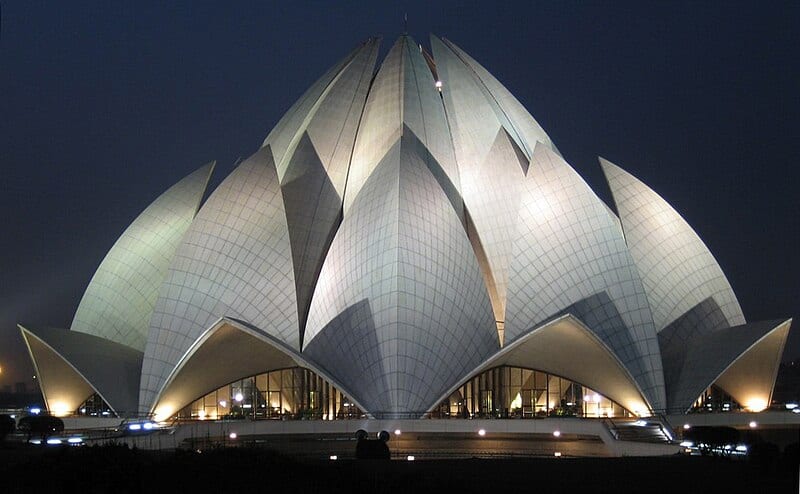
The Lotus Temple in Delhi is a Bahá’í House of Worship known for its flower-like shape. Designed by Fariborz Sahba, the temple features 27 free-standing marble-clad “petals” arranged in clusters of three. Its serene design symbolizes purity and simplicity, welcoming people of all religions. The interior is devoid of idols or images, promoting a sense of unity and tranquility. The Lotus Temple is a striking example of contemporary religious architecture.
The Mushroom House (Perinton, New York, USA)
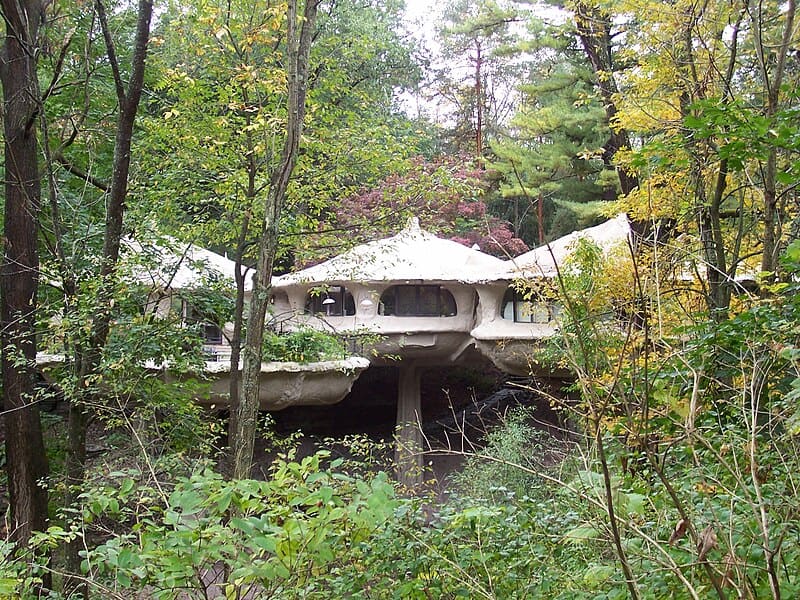
The Mushroom House, designed by James Johnson, looks like a cluster of fungi emerging from the forest floor. Located in Perinton, New York, this organic structure consists of pod-like rooms supported by stalk-like columns. Each pod features curved walls and natural materials, creating a cozy, cave-like atmosphere. The house’s design is inspired by the natural forms of Queen Anne’s Lace and wild mushrooms. It’s a whimsical blend of architecture and nature.
The UFO House (Sanjhih, Taiwan)
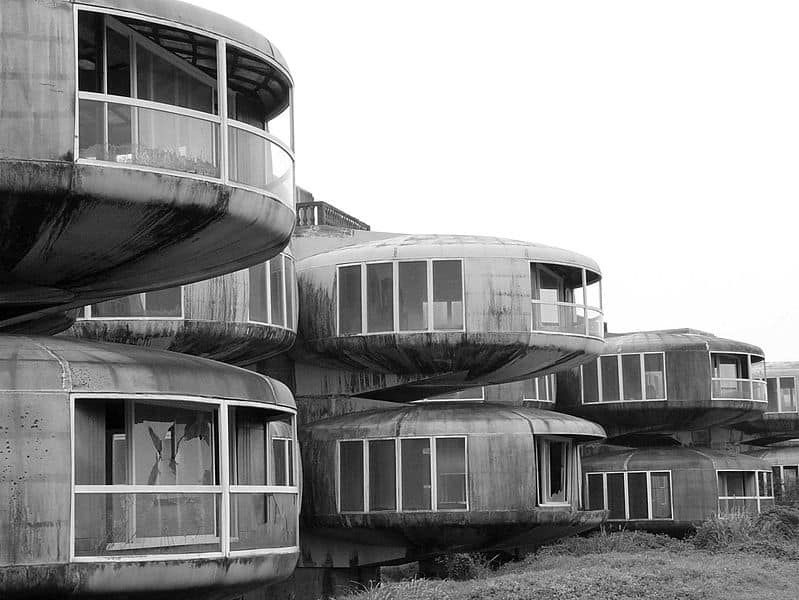
The UFO House in Sanjhih, Taiwan, is a futuristic structure resembling a cluster of flying saucers. Originally intended as a holiday resort, the project was abandoned in the 1980s due to financial issues. The building’s circular windows and pod-like design give it an otherworldly appearance. Despite its dilapidated state, the UFO House remains a popular spot for urban explorers and photographers. Its eerie, abandoned look adds to its mystique.
The Flintstone House (Hillsborough, California, USA)
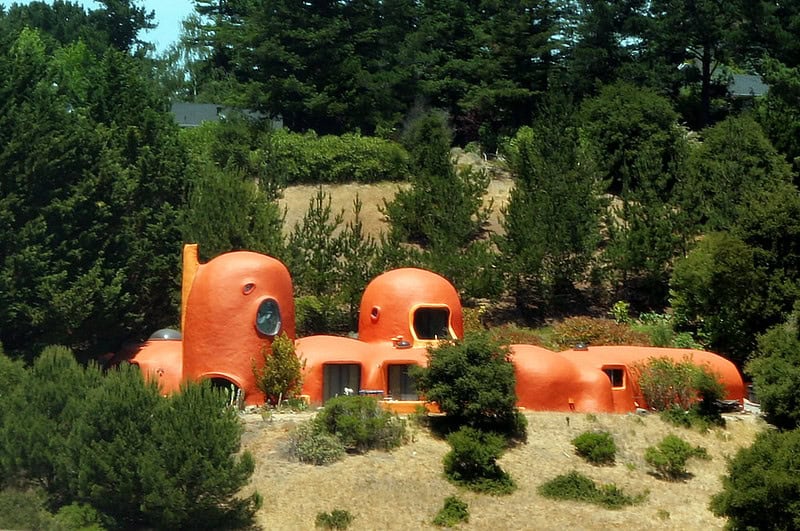
Inspired by the famous cartoon, the Flintstone House in Hillsborough, California, looks like it came straight out of Bedrock. Designed by architect William Nicholson, the house features organic, rounded forms made from concrete and rebar. Its interior is just as quirky, with custom-built furniture and vibrant colors. The house has become a local landmark, sparking both admiration and controversy among residents. Its playful design captures the spirit of the beloved TV show.
Casa Batlló (Barcelona, Spain)
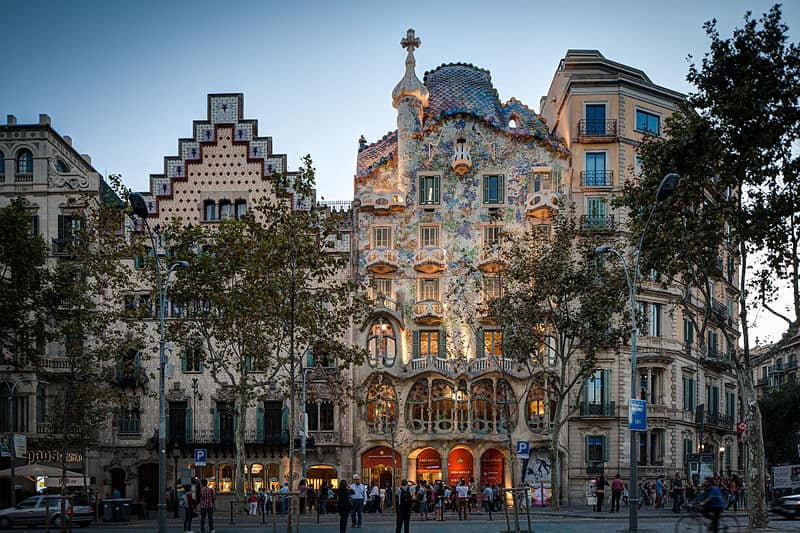
Casa Batlló, designed by Antoni Gaudí, is a masterpiece of Modernisme architecture located in Barcelona. The building’s facade is covered in colorful mosaics and undulating stonework, resembling a dragon’s scales. Its interior is equally imaginative, with organic shapes, stained glass windows, and innovative use of light. Gaudí’s attention to detail and symbolism is evident throughout the house. Casa Batlló is a UNESCO World Heritage Site and a testament to Gaudí’s genius.
The National Centre for the Performing Arts (Beijing, China)
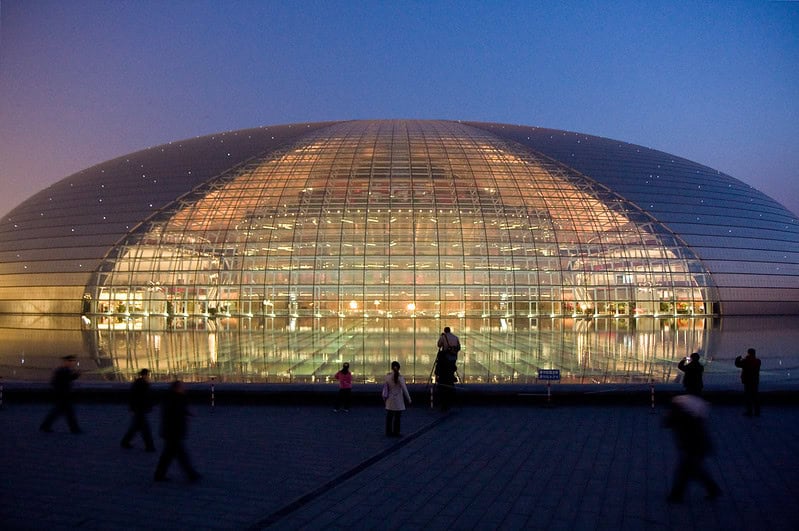
Nicknamed “The Giant Egg,” the National Centre for the Performing Arts in Beijing is an elliptical dome made of titanium and glass. Designed by French architect Paul Andreu, the building is surrounded by an artificial lake, creating a striking reflection. Inside, it houses an opera house, a concert hall, and a theater, accommodating various cultural performances. The futuristic design aims to blend seamlessly with the traditional architecture of Beijing. Its sleek, modern look symbolizes the fusion of past and present.
The Kansas City Library (Kansas City, Missouri, USA)
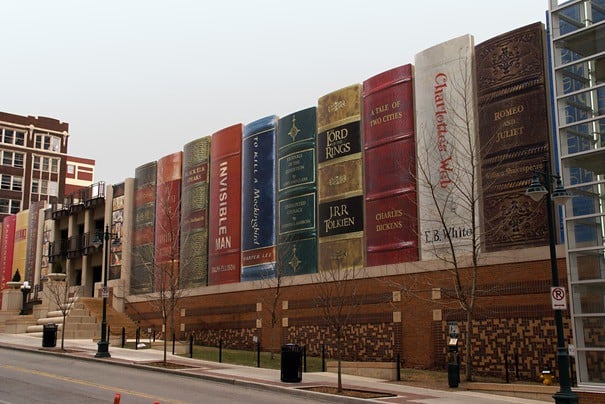
The Kansas City Library is renowned for its unique parking garage facade, designed to look like a row of giant books. Each “book” is 25 feet tall and represents a classic work of literature, chosen by the local community. The design aims to promote literacy and the importance of libraries in the digital age. Inside, the library features modern facilities and extensive collections. The building has become a cultural landmark and a favorite spot for book lovers.
The Bubble House (Tourrettes-sur-Loup, France)
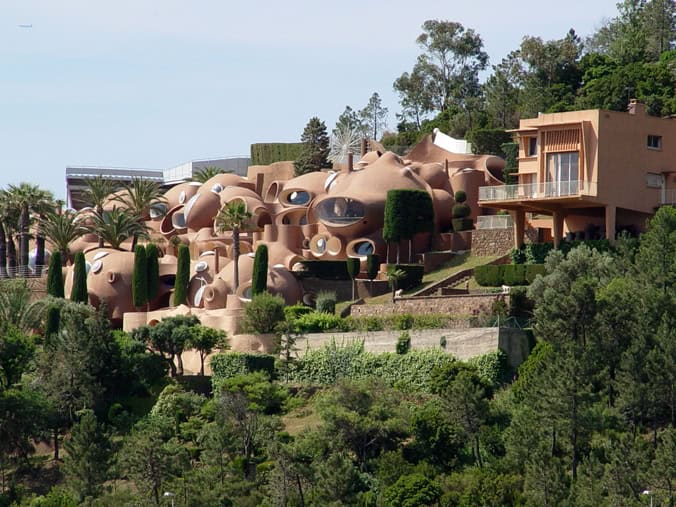
Designed by Hungarian architect Antti Lovag, the Bubble House in Tourrettes-sur-Loup, France, is a series of interconnected spheres. The organic design, inspired by natural forms, aims to create a harmonious living environment. Each room is a bubble with curved walls and rounded openings, providing a sense of continuity and flow. The house features vibrant interiors and unique furniture designed by Lovag himself. It’s a fascinating example of unconventional residential architecture.
The Upside-Down House (Szymbark, Poland)
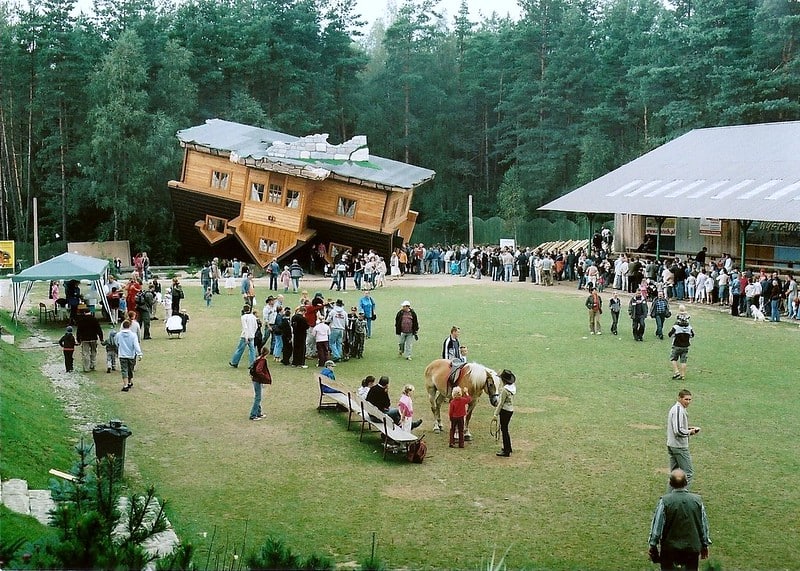
The Upside-Down House in Szymbark, Poland, is a quirky tourist attraction designed by Polish businessman Daniel Czapiewski. The entire house, including its interior furnishings, is built upside down, creating a disorienting experience for visitors. It symbolizes the confusion and upheaval of the communist era in Poland. Walking through the house, visitors feel as if they are defying gravity. This peculiar structure serves as a thought-provoking piece of architectural art.
The Wall House (Groningen, Netherlands)
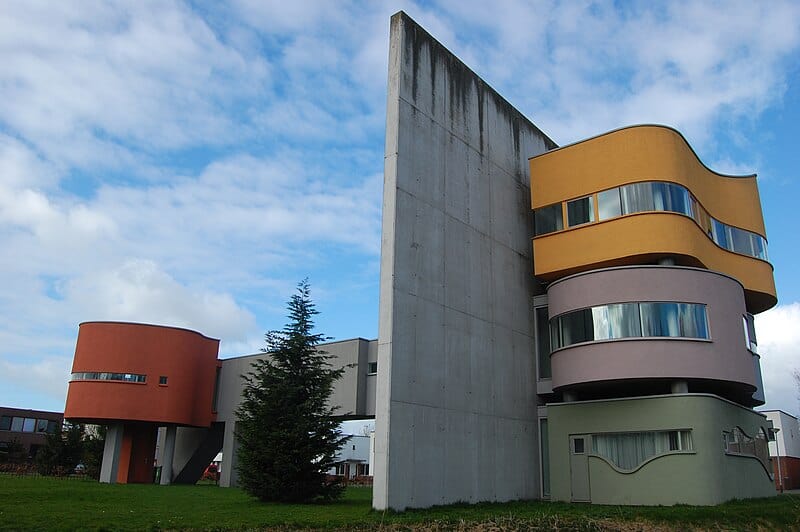
The Wall House, designed by American architect John Hejduk, is a striking example of deconstructivist architecture. Located in Groningen, Netherlands, the building features bold, geometric forms and a massive central wall. The design challenges traditional notions of space and function, with rooms extending from the wall like abstract shapes. Its unique aesthetic has attracted architecture enthusiasts from around the world. The Wall House is both a residence and a piece of architectural art.
The Sheep Building (Tirau, New Zealand)
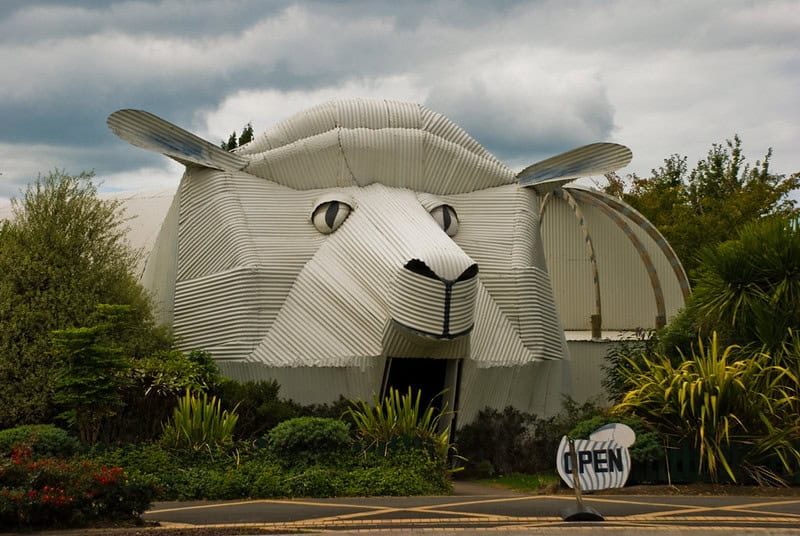
The Sheep Building in Tirau, New Zealand, is a playful structure designed to look like a giant sheep. Made from corrugated iron, the building houses a wool and craft shop. Next to it is the Dog Building, shaped like a sheepdog, creating a whimsical duo. The buildings have become iconic roadside attractions, celebrating the region’s agricultural heritage. Their charming and humorous design delights visitors of all ages.
The Kunsthaus Graz (Graz, Austria)
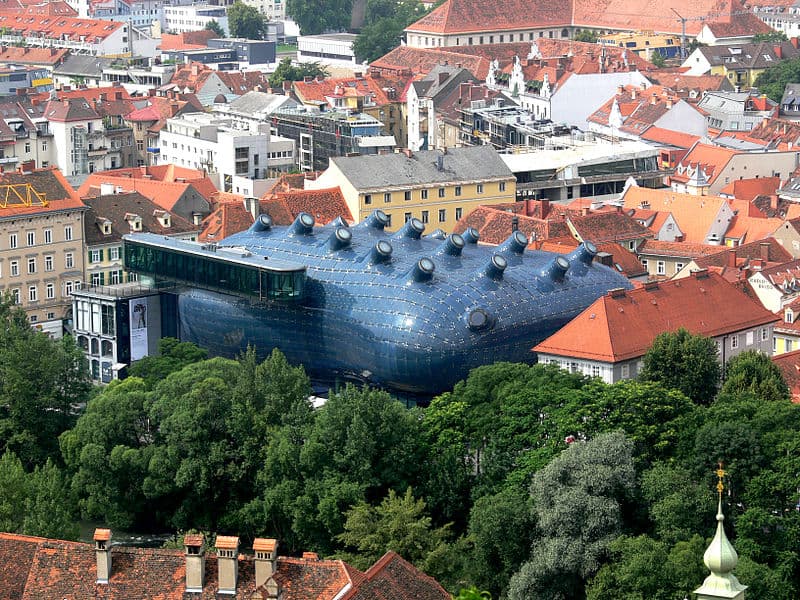
Nicknamed “The Friendly Alien,” the Kunsthaus Graz is a contemporary art museum with a futuristic design. Created by architects Peter Cook and Colin Fournier, the building features a biomorphic shape and a skin made of blue acrylic panels. Its unique “nozzles” protrude from the roof, allowing natural light to filter into the galleries. The interior spaces are flexible and open, designed to accommodate various art exhibitions. The Kunsthaus Graz stands as a bold statement of modern architectural innovation.
The Nautilus House (Mexico City, Mexico)
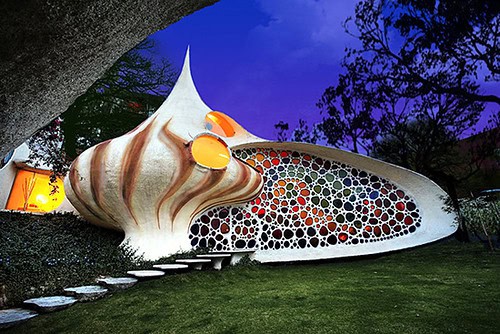
Designed by architect Javier Senosiain, the Nautilus House in Mexico City is inspired by the shape of a seashell. The organic design features smooth, flowing lines and vibrant stained glass windows. Inside, the living spaces are arranged in a spiral, creating a sense of movement and fluidity. The house is constructed from ferrocement and covered with natural vegetation, blending seamlessly with its surroundings. The Nautilus House is a stunning example of biomimicry in architecture.
This article originally appeared on Rarest.org.
More From Rarest.Org
Science fiction has long captivated readers with its imaginative worlds, futuristic technologies, and thought-provoking themes. From exploring the depths of space to questioning the nature of humanity, the genre pushes the boundaries of what is possible. Read more.
Exploring Europe’s most stunning castles offers a journey through history, architecture, and breathtaking landscapes. From the fairy tale spires of Neuschwanstein to the intricate beauty of the Alhambra, each castle tells a unique story. Read more.
Exploring the world by train offers a unique blend of luxury, comfort, and breathtaking scenery. From the historic elegance of the Venice Simplon-Orient-Express to the stunning landscapes traversed by the Rocky Mountaineer, these journeys provide unparalleled experiences. Read more.


